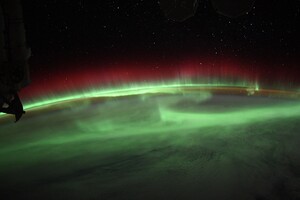Pink glows were observed in some parts of the world.

Last week in the sky over Norway unusual pink northern lights They were linked to a solar storm that punched a “crack” in the Earth's magnetosphere, causing charged particles to penetrate deeper than usual into the atmosphere, leading to the appearance of unusual colors, according to Live Science.
The unusual phenomenon was noticed On November 3, a group of tourists led by Markus Varik, a tour guide in search of the northern lights from the Greenlander company. According to Varick, the bright auroras appeared around 18:00 local time and lasted for about two minutes.
Read also: Scientists recorded audio with the eerie sound of the Earth's magnetic field
Pink auroras appeared shortly after the formation of a small crack in the magnetosphere – the invisible magnetic field surrounding the Earth. Scientists noticed this breach after the planet was covered by a weak magnetic storm of class G1.
The auroras appear when streams of high-energy charged particles, known as the solar wind, hit Earth's magnetosphere. The planet's magnetic field protects us from harmful radiation, but it is weaker at the poles, allowing the solar wind to pass through the atmosphere. The particles overheat the gases that glow brightly in the night sky.
Usually the auroras are green in color, produced by oxygen atoms in the atmosphere. But during the November 3rd magnetic storm, a breach was created that allowed charged particles to descend below, where nitrogen was the most abundant gas. As a result, the auroras were colored neon pink.
According to Varick, deep green auroras were also observed that day.
The fissure in the magnetosphere closed about six hours after it appeared. . At this time, a band of blue light appeared over Sweden, which hung motionless for 30 minutes. But not all experts believe that it was an unusual phenomenon associated with the northern lights. Some suggest that it was a trace of the launch of a Russian rocket.
Related video
Recall that on November 6, there was a flare on the Sun, which was a surprise for scientists. It led to a temporary blackout of radio communications connection over Australia and New Zealand.




